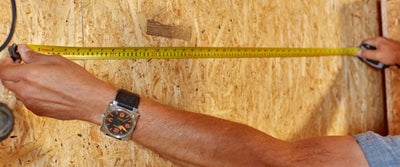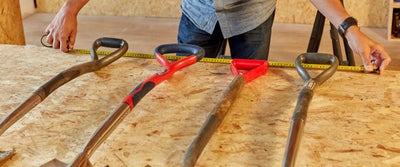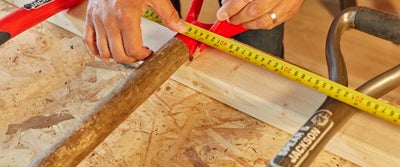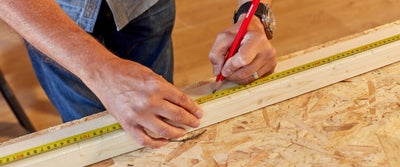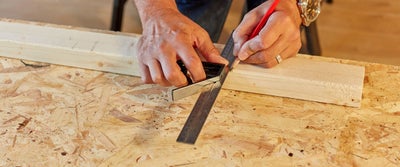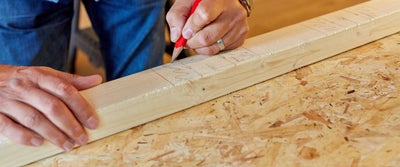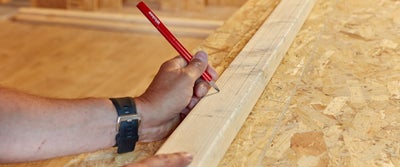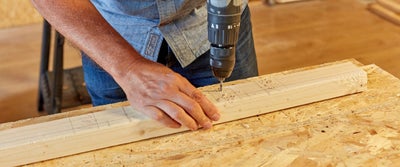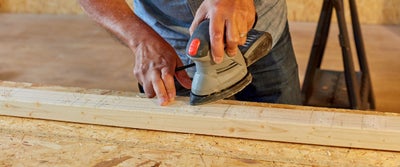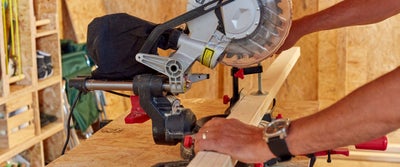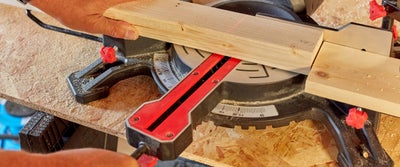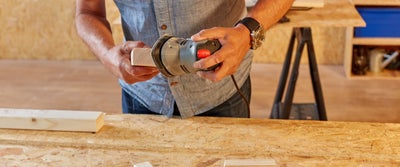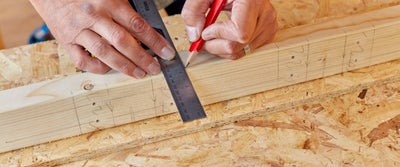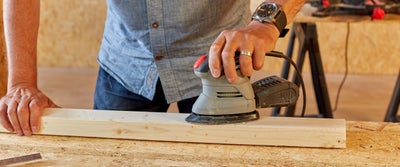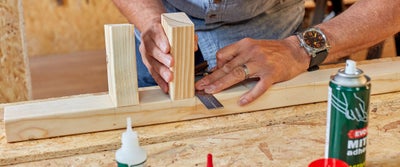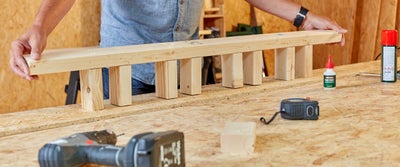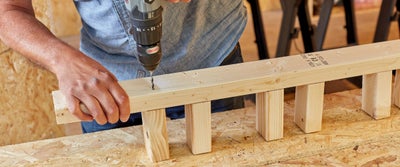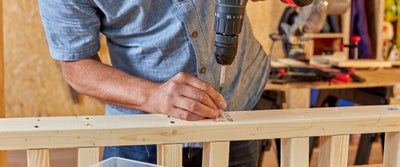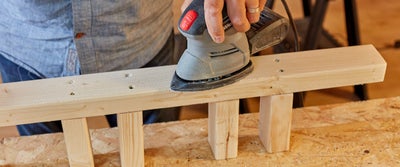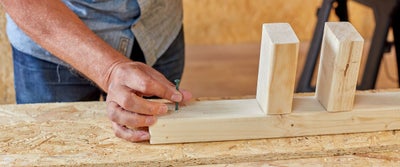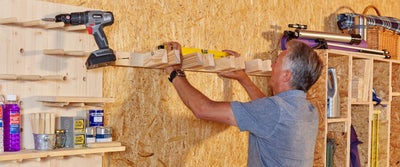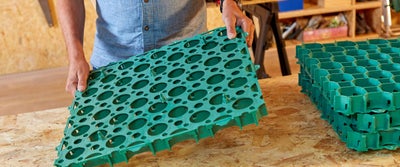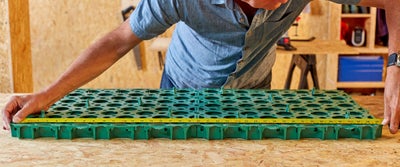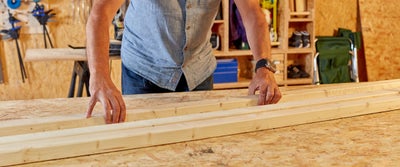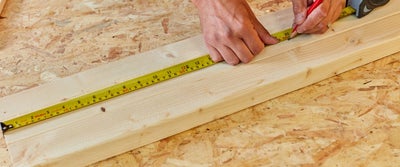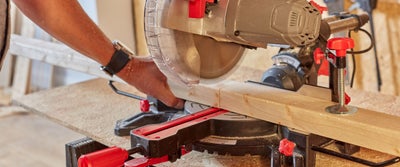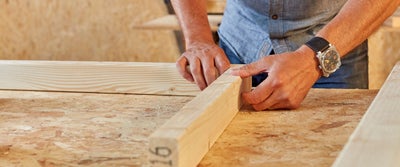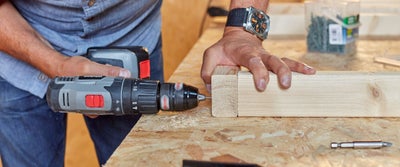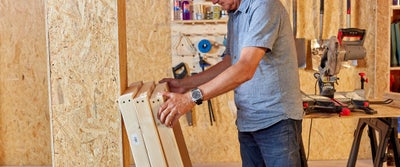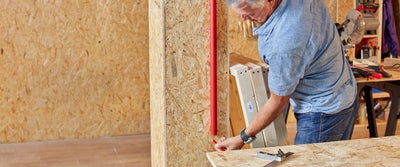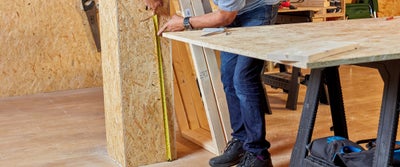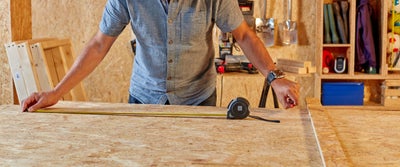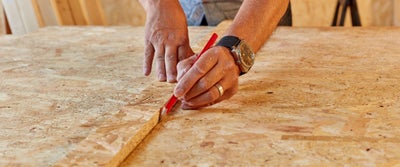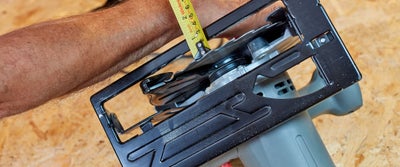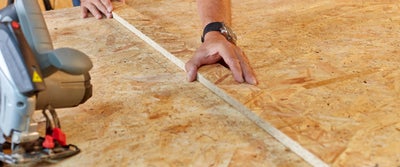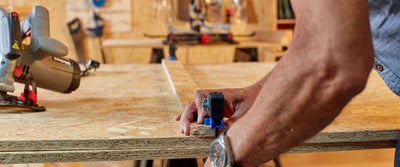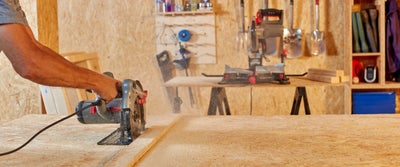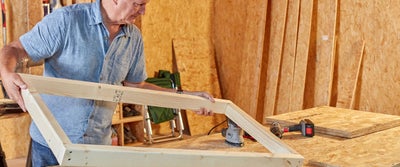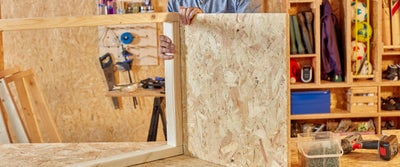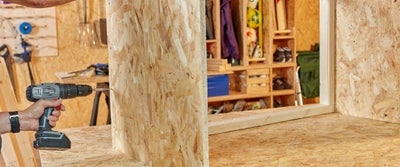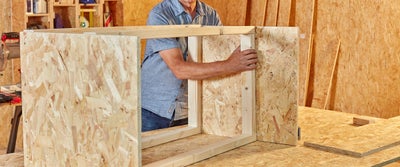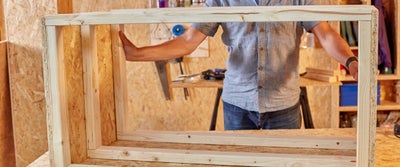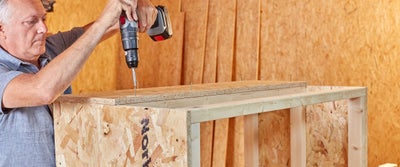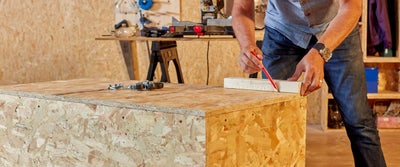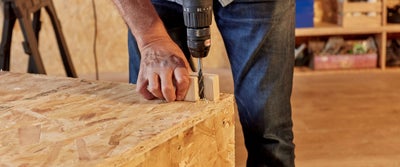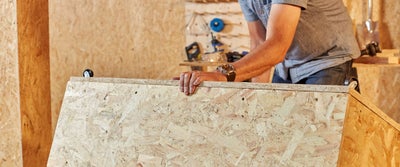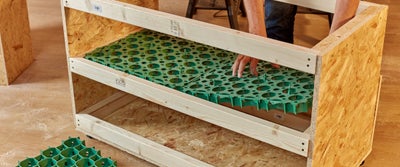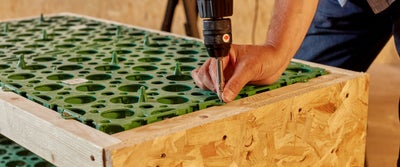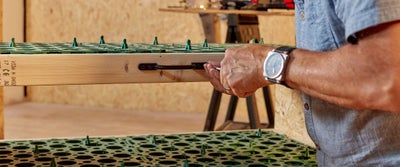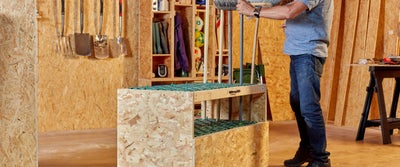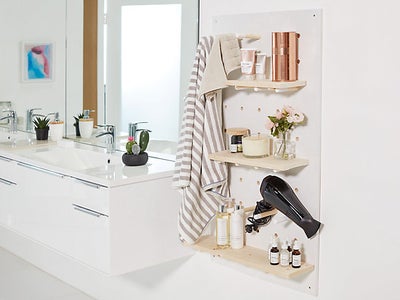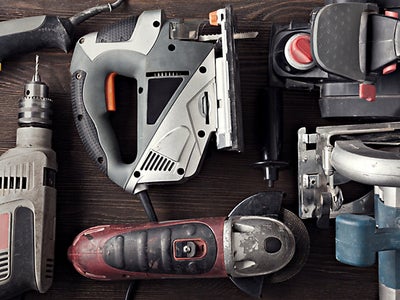Build your own garden tool storage rack
TOOLS
MATERIALS
- 120 grit sanding sheets
- Wood screws (4 X 40mm)
- 4 X driveway & ground base grids (40 X 500 X 500mm)
- 1 X bow pull handle - black 150mm
- 1 X light duty castor wheel peg fix - 41mm pack of 4
- 2 X general purpose OSB 3 board (18mm X 1220mm X 2440mm)
- 6 X studwork CLS timber (38mm X 63mm X 2400mm)
- Mitre adhesive
SAFETY
Planning & preparation
- We are going to show you how to make a two-piece garden storage solution step by step.
- Having a dedicated place to store your tools maximises the room in your workshop, giving you more space to get creative with. The tool wall rack is constructed from studwork CLS timber and features bespoke timber hooks, so you can hang your large and heavy tools. The portable storage unit is built from studwork CLS frames and OSB 3 panels, that hold repurposed driveway grids to store your tall garden tools and equipment.
- The materials for these projects will cost under £125 and will take a DIYer with moderate skill, approximately 4 hours to build.
- The wall rack is entirely bespoke and can be made to fit your available space. The constructed portable unit can also be tweaked to your needs, however if you choose to follow our cutting list, it will measure 610 X 1112 X 610mm.
- To amend the design, simply measure your wall space for the tool rack and the length of your longest tool for the portable unit.
- While the driveway grids are a great choice as they slot perfectly into your frames, you could also make the grid system divider from Pine Stripwood Moulding.
Doing it right
- Our step by step instructions have been designed as a guideline to build a bespoke tool wall rack, while the portable unit is also supported by a cutting list.
- We have chosen to work with studwork CLS timber and OSB 3 for their versatility and affordability, however you can use any sort of timber to suit your space. Using offcut timber from other projects is a great way to repurpose leftover pieces.
- The tool wall rack is designed to hold a number of heavy and bulky items. If you feel that you need additional wall support, use wall plugs and additional screws through the rail for a secure fit.
- Study the cutting list before construction to allow for measuring and cutting the timber efficiently. You can save time by scribing identical measurements across all of the relevant pieces of timber at once, while a chop saw stop block will allow you to make identical cuts at speed.
- Consider the tolerance, runout and alignment of your power saw blades when following cutting lists. Depending on the tolerance of your tools, you may find that the cutting list dimensions are adjusted by approximately 3mm.
- Watch our top tip videos for our Wickes DIY skills, tips and advice.
Staying safe
- For safety, we recommend wearing protective goggles and heavy-duty gloves when using a chop saw or drill.
- Check that your materials are securely clamped to your workbench surface before you begin making any cuts.
- Inspect the cables and blade of the chop saw and circular saw before they are plugged in, to ensure they are in good condition. If any of the elements need to be replaced, make sure this is done before construction begins.
- Always ensure that your construction area is well lit and ventilated.
Cutting list
View and download the cutting list
here
